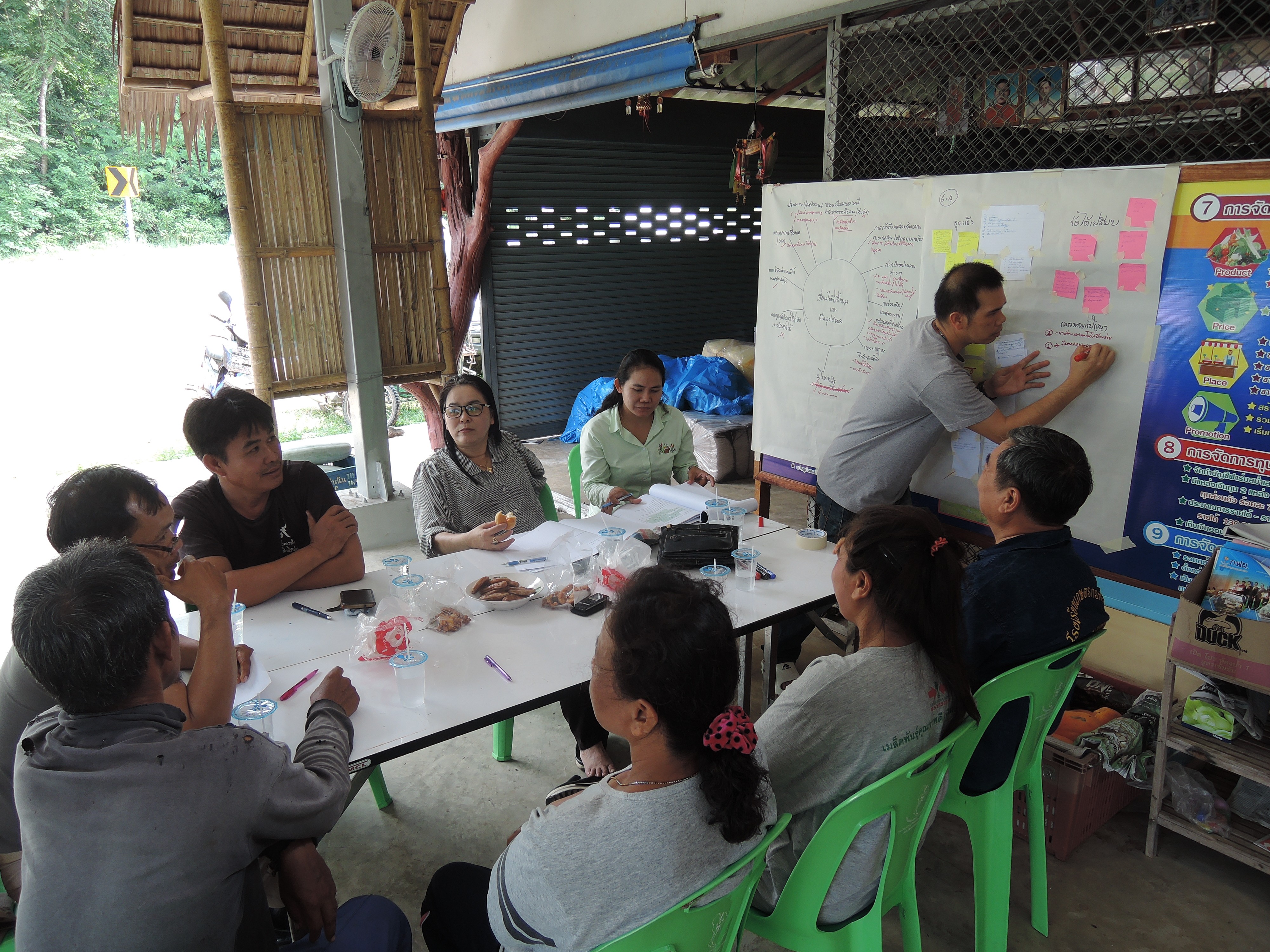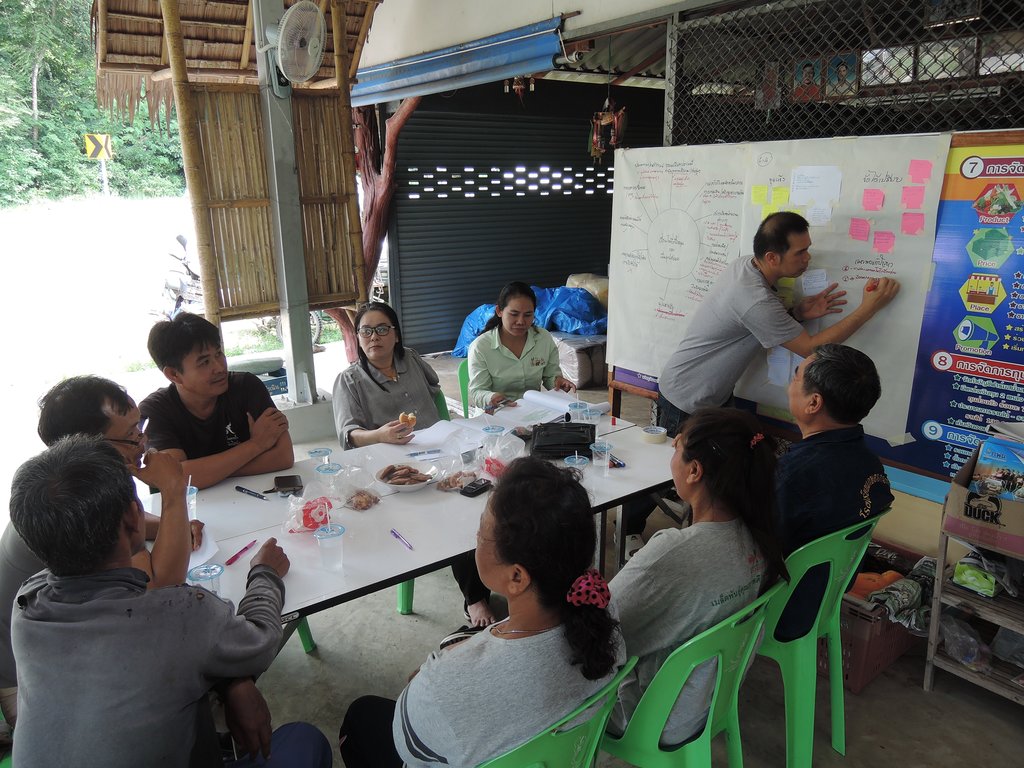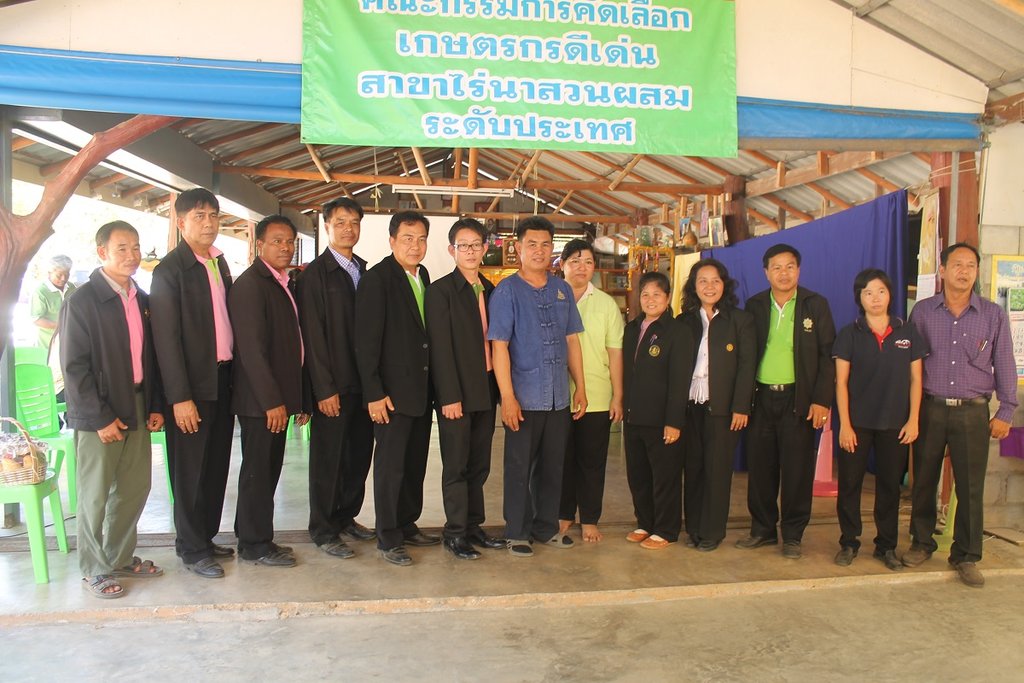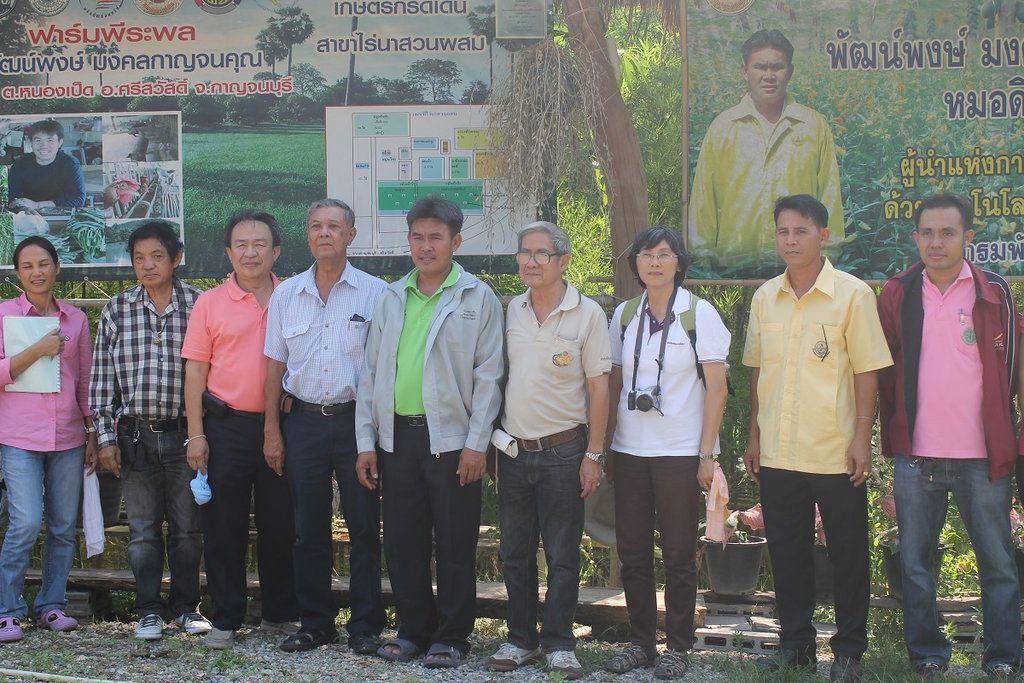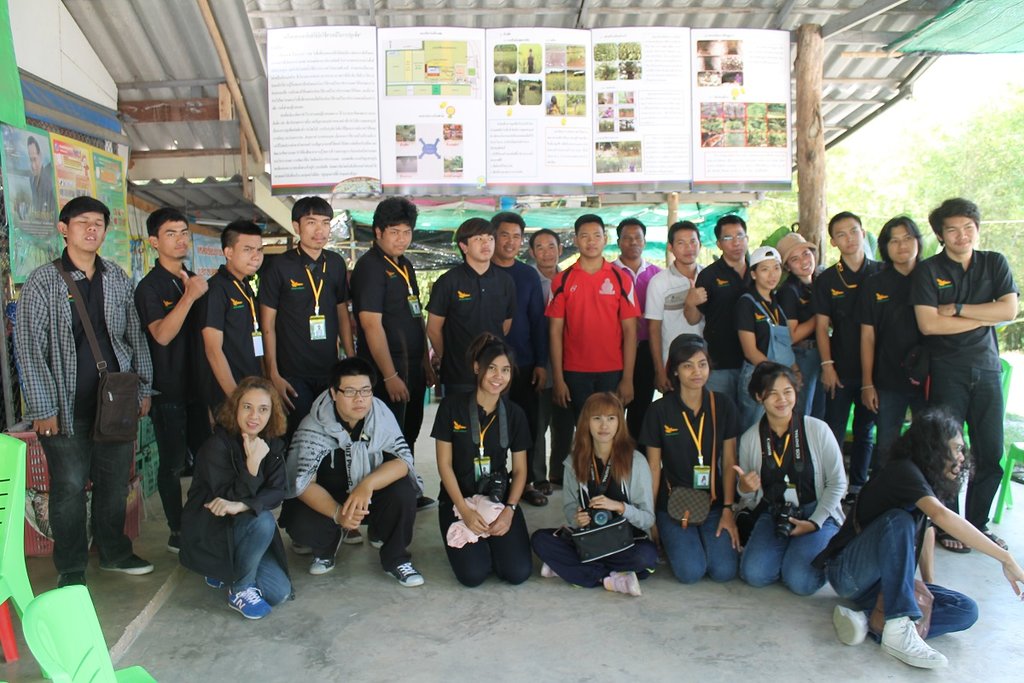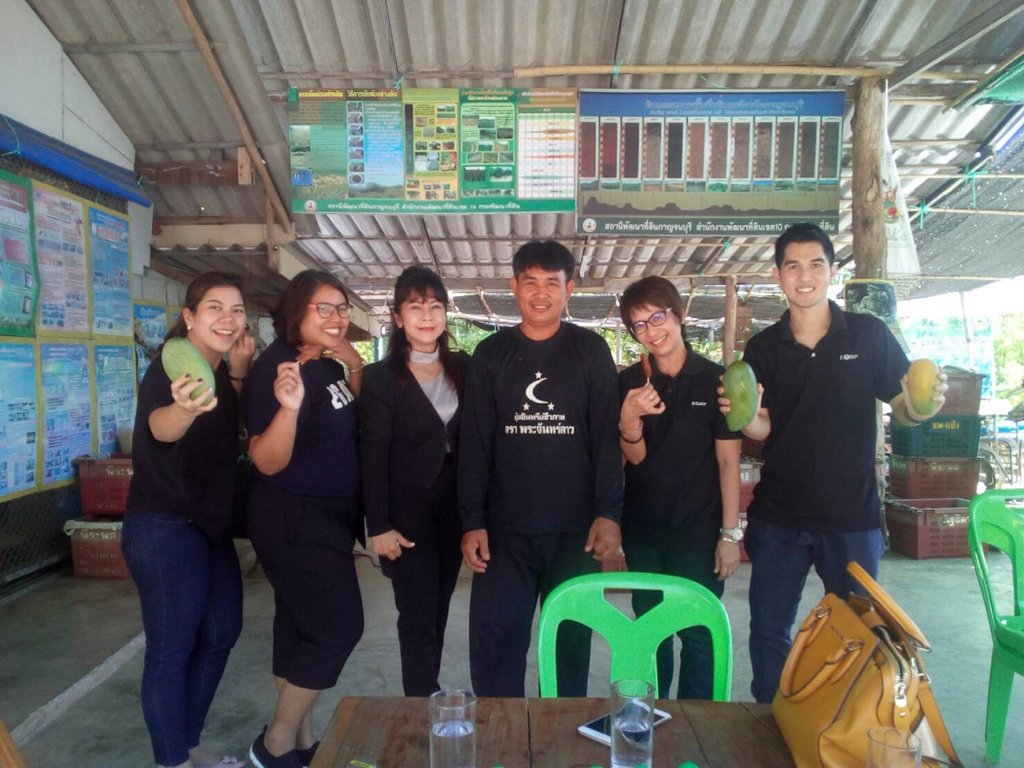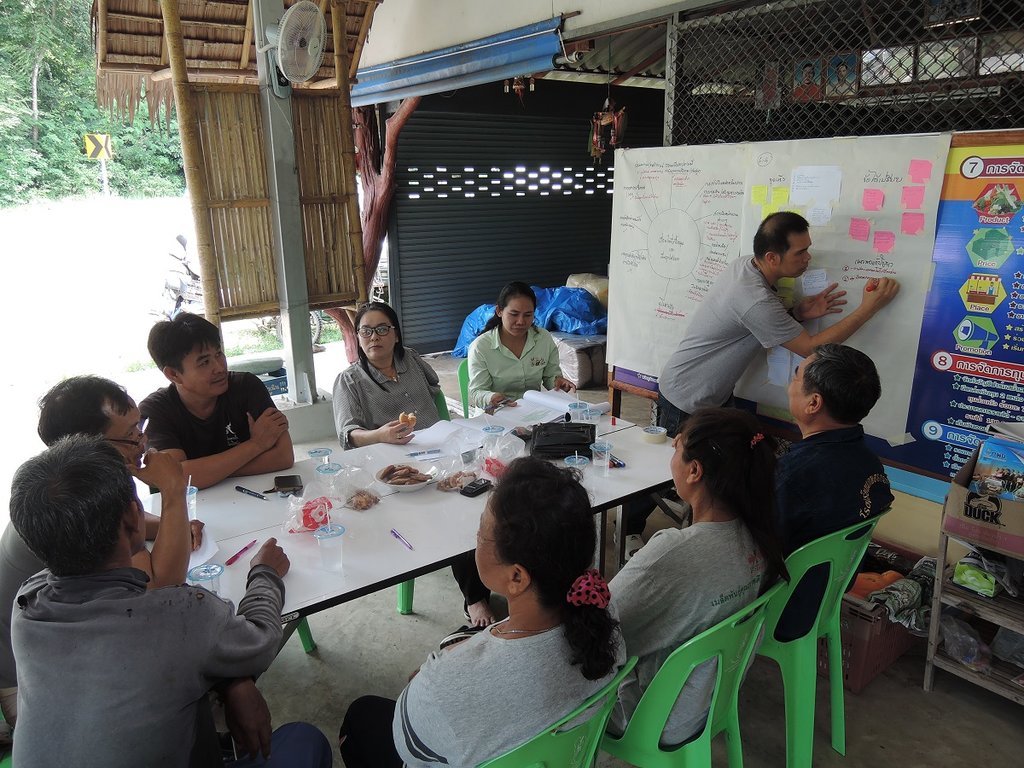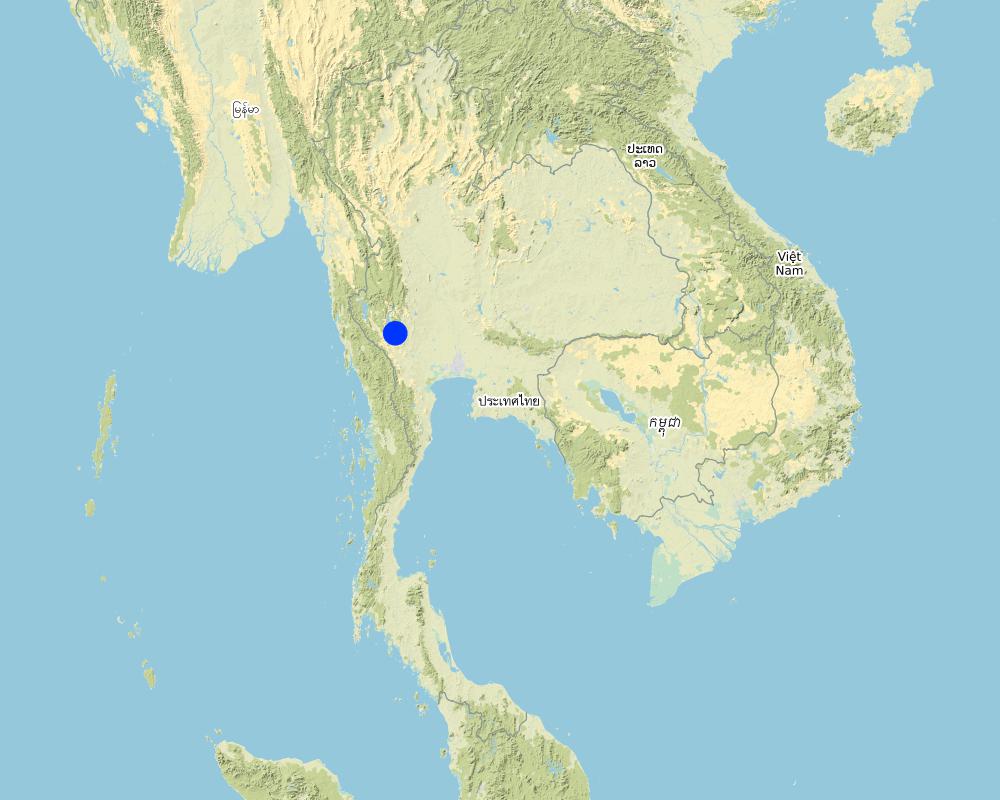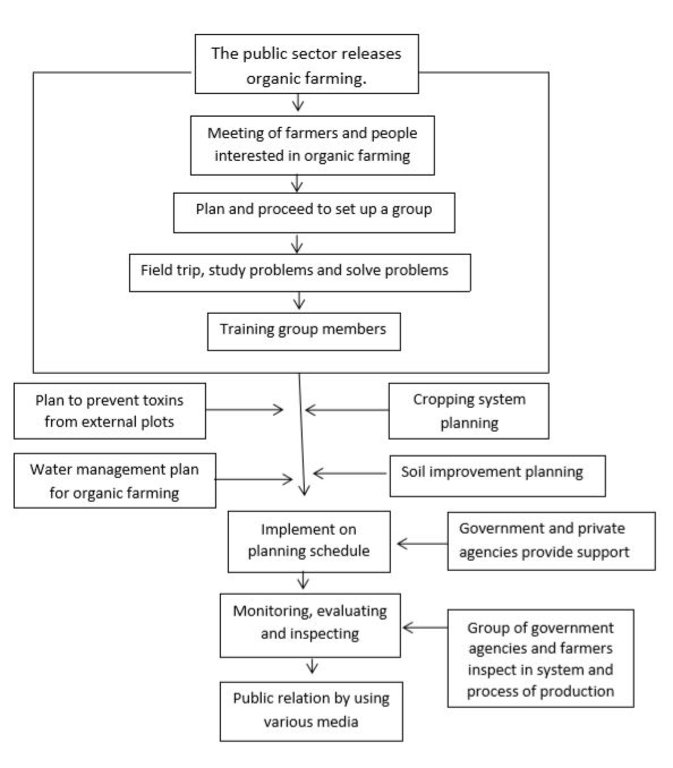Natural Agriculture Club [Thailand]
- Creation:
- Update:
- Compiler: Kukiat SOITONG
- Editor: –
- Reviewers: Rima Mekdaschi Studer, William Critchley
-
approaches_4243 - Thailand
View sections
Expand all Collapse all1. General information
1.2 Contact details of resource persons and institutions involved in the assessment and documentation of the Approach
land user:
Mongkolkankul Phongphat
084-5276227 / -
- / -
-
119/1Moo.4 Tambon Nongped Srisawat District Kanchanaburi province 71250
Thailand
land user:
Riangruap Manop
086-9865017 / -
- / -
-
1/1Moo2 Tambon Nongped Srisawat District Kanchanaburi province 71250
Thailand
land user:
Wisarnwaekin Chavalit
034-696169 / 089-8976212
- / -
-
99…Moo.3 Tambon Nongped Srisawat District Kanchanaburi province 71250
Thailand
land user:
Phisut Thipmat
089-8251578 / -
- / -
-
83Moo.4 Tambon Nongped Srisawat District Kanchanaburi province 71250
Thailand
1.3 Conditions regarding the use of data documented through WOCAT
The compiler and key resource person(s) accept the conditions regarding the use of data documented through WOCAT:
Yes
1.4 Reference(s) to Questionnaire(s) on SLM Technologies
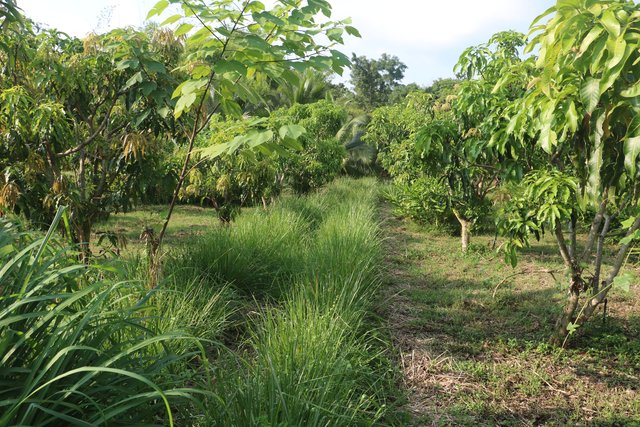
Organic Farming on a Moderate Hillside Slope [Thailand]
Organic farming on moderate hillside slopes protects the land, soil and water to produce sustainable and safe and natural farm products without the use of chemicals.
- Compiler: Kukiat SOITONG
2. Description of the SLM Approach
2.1 Short description of the Approach
The Natural Agriculture Club is a group of farmers who conduct organic farming on sloping land. An organic farming technology transfer centre has been established.
2.2 Detailed description of the Approach
Detailed description of the Approach:
The objectives of the Natural Agriculture Club are to bring together the farmers who practice organic farming on sloping land by setting up a forum for knowledge exchange and then sharing through the Organic Agriculture Technology Transfer Center. This will enable farmers gain knowledge and better understanding about organic agriculture production, and then increase their management capability from farm to market.
The Natural Agriculture Club guides organic production on sloping land and this involves restoration of agricultural ecosystems on farms. Therefore, it is necessary to improve learning about nature and farm management. Organic agriculture is a guiding principle of agriculture, based learning processes because farmers have to observe, analyze, synthesize and summarize lessons learned from their own farm. The physical conditions, such as soil, climate, and socioeconomics need to be considered in developing an organic approach that is specific to the area. The group learning system process includes the following steps:
1. Establishing a Natural Agriculture Club
2. Inviting interested farmers to join the club
3. Setting up a group management committee
4. Training club members about organic agriculture production and the process of managing the products
5. Creating a knowledge transfer process through practicing in the learning center
6. Providing an internal audit system to maintain the standards of organic farming
7. Running club seminars
8. Outreaching to YouTube videos, brochures, TV and radio interviews
9. Promotion and support from the Land Development Department, Department of Agricultural Extension, Department of Alternative Energy Development and The Energy Conservation Electricity Generating Authority
There are various stakeholders who are involved in the activities of the Natural Agriculture Club. Lead farmers and farmer members will participate in group management, to share and transfer knowledge among group members. Government and private agencies are promoting and supporting in terms of finance, inputs, promotion and public relations activities for the club. Exporters of organic products help distributing agricultural products to foreign countries. FAO is one of the agencies involved. Schools, universities, with their teachers and students are learning and observing the club activities. Members of the club are of the opinion that: the Natural Agriculture Club is a participatory forum involving both public agencies and farmers; group operations have the power to negotiate and contact the market directly; group learning provides better knowledge, skills and experience in organic agriculture; loyalty of farmer members makes the Natural Agriculture Club strong; and farmer members adopt and apply appropriate technologies because they have learned from the knowledge sharing and exchange - and from their own doing.
2.3 Photos of the Approach
2.4 Videos of the Approach
Comments, short description:
-
Location:
-
Name of videographer:
-
2.5 Country/ region/ locations where the Approach has been applied
Country:
Thailand
Region/ State/ Province:
Kanchanaburi
Further specification of location:
Government agencies, such as DOAE, LDD, support the project and giving information and public relations
Comments:
-
Map
×2.6 Dates of initiation and termination of the Approach
Indicate year of initiation:
2006
Comments:
There have been doing organic farming continuously
2.7 Type of Approach
- project/ programme based
2.8 Main aims/ objectives of the Approach
1. To gather the farmers who practice organic farming on sloping land by setting up a forum for knowledge exchange and sharing through the establishment of the Organic Agriculture Technology Transfer Center.
2. To enable farmers to gain knowledge and better understanding about organic agriculture production and to increase their organic agricultural products management capability from farm to market.
2.9 Conditions enabling or hindering implementation of the Technology/ Technologies applied under the Approach
social/ cultural/ religious norms and values
- hindering
Most of the farmers and neighbouring farmers are still using chemicals; it is difficult to control the contamination.
availability/ access to financial resources and services
- enabling
Finance is available at the Bank of Agriculture and Agricultural Cooperatives (BAAC) or community fund.
institutional setting
- enabling
There are several supporting agencies such as the Department of Agriculture (DOA), the Land Development Department (LDD) and the Electricity Generating Authority of Thailand (EGAT).
collaboration/ coordination of actors
- enabling
Integrated working among local organizations
legal framework (land tenure, land and water use rights)
- hindering
No land ownership certificate
policies
- enabling
National policy
knowledge about SLM, access to technical support
- enabling
Close cooperation with the government agencies makes the technical support and transfer faster.
markets (to purchase inputs, sell products) and prices
- enabling
Produce the products that meet the market demand.
other
- hindering
Shortage of labour and high labour cost
3. Participation and roles of stakeholders involved
3.1 Stakeholders involved in the Approach and their roles
- local land users/ local communities
Lead farmers and farmer members
Lead farmers and farmer members will participate in group management, to share and transfer knowledge among the group members.
- teachers/ school children/ students
Teachers/ school children/ students
Teachers, students are learning and observing the club activities.
- private sector
EGAT
Private agencies are promoting and supporting in terms of finance, inputs, promotion and public relations activities for the club.
- national government (planners, decision-makers)
Government agencies such as LDD, the Department of Agricultural Extension (DOAE), Rural Development Dept., Energy Ministry, etc.
Promoting and supporting in terms of finance, inputs, promotion and public relations activities for the club.
- international organization
FAO visits and advices
Awarded the contest, giving advice.
If several stakeholders were involved, indicate lead agency:
-
3.2 Involvement of local land users/ local communities in the different phases of the Approach
| Involvement of local land users/ local communities | Specify who was involved and describe activities | |
|---|---|---|
| initiation/ motivation | self-mobilization | Government agencies, such as DOAE, LDD, support the project and giving information and public relations |
| planning | interactive | Government agencies and farmers participate in planning, meeting, monitoring and examining the farm for organic agriculture practice |
| implementation | interactive | Farmers, public and private agencies |
| monitoring/ evaluation | interactive | Member farmers, public and private agencies |
3.3 Flow chart (if available)
Description:
The steps of operating the Natural Agriculture Club are:
1. Establishing the Natural Agriculture Club
2. Inviting interested farmers to join the club
3. Setting up a group management committee to carry out club activities
4. Training club members to have knowledge of organic agriculture production and the process of managing the products
5. Creating a knowledge transfer process through practicing in the learning center by planning and managing the farm manually
6. Providing internal audit system to maintain the standards of organic farming
7. Running club seminars
8. Outreaching to YouTube video, brochures, TV and radio interviews
9. Promotion and support from the Land Development Department, Department of Agricultural Extension, Department of Alternative Energy Development and The Energy Conservation Electricity Generating Authority
Author:
Kulwadee Suthawas
3.4 Decision-making on the selection of SLM Technology/ Technologies
Specify who decided on the selection of the Technology/ Technologies to be implemented:
- all relevant actors, as part of a participatory approach
Explain:
-
Specify on what basis decisions were made:
- personal experience and opinions (undocumented)
4. Technical support, capacity building, and knowledge management
4.1 Capacity building/ training
Was training provided to land users/ other stakeholders?
Yes
Specify who was trained:
- land users
- students
If relevant, specify gender, age, status, ethnicity, etc.
-
Form of training:
- farmer-to-farmer
- courses
Subjects covered:
Land development technology
Comments:
Systematic organic farming technology transfer
4.2 Advisory service
Do land users have access to an advisory service?
Yes
Specify whether advisory service is provided:
- at permanent centres
Describe/ comments:
Related government officers often advised.
4.3 Institution strengthening (organizational development)
Have institutions been established or strengthened through the Approach?
- yes, moderately
Specify the level(s) at which institutions have been strengthened or established:
- local
Describe institution, roles and responsibilities, members, etc.
-
Specify type of support:
- financial
- capacity building/ training
Give further details:
Financial support from LDD and EGAT
4.4 Monitoring and evaluation
Is monitoring and evaluation part of the Approach?
Yes
Comments:
Monitoring and evaluation
If yes, is this documentation intended to be used for monitoring and evaluation?
Yes
4.5 Research
Was research part of the Approach?
No
5. Financing and external material support
5.1 Annual budget for the SLM component of the Approach
If precise annual budget is not known, indicate range:
- > 1,000,000
Comments (e.g. main sources of funding/ major donors):
LDD, EGAT, Energy Ministry
5.2 Financial/ material support provided to land users
Did land users receive financial/ material support for implementing the Technology/ Technologies?
Yes
If yes, specify type(s) of support, conditions, and provider(s):
Building, farm inputs, processing plant, packaging machine and accessories
5.3 Subsidies for specific inputs (including labour)
- equipment
| Specify which inputs were subsidised | To which extent | Specify subsidies |
|---|---|---|
| machinery | fully financed | Building 500,000 THB, Processing Plant 60,000 THB, Packaging machine 190,000 THB and solar cell 160,000 THB |
| tools | fully financed | |
- agricultural
| Specify which inputs were subsidised | To which extent | Specify subsidies |
|---|---|---|
| seeds | fully financed | LDD supported sunn hemp seed, 2,000 THB; 20,000 vetiver grass slips, costing 14,600 THB; 4,200 kg dolomite, costing 16,800 THB. |
If labour by land users was a substantial input, was it:
- voluntary
Comments:
-
5.4 Credit
Was credit provided under the Approach for SLM activities?
No
5.5 Other incentives or instruments
Were other incentives or instruments used to promote implementation of SLM Technologies?
Yes
If yes, specify:
LDD and EGAT supported and promoted in terms of inputs, accessories, finance and policy.
6. Impact analysis and concluding statements
6.1 Impacts of the Approach
Did the Approach empower local land users, improve stakeholder participation?
- No
- Yes, little
- Yes, moderately
- Yes, greatly
Farmers operating farming continuously and get income for their living.
Did the Approach enable evidence-based decision-making?
- No
- Yes, little
- Yes, moderately
- Yes, greatly
Farmer did farm account as a tool for decision-making
Did the Approach help land users to implement and maintain SLM Technologies?
- No
- Yes, little
- Yes, moderately
- Yes, greatly
Farmers applied various technologies.
Did the Approach improve coordination and cost-effective implementation of SLM?
- No
- Yes, little
- Yes, moderately
- Yes, greatly
Opportunity to share/learn/advise/be motivated and be supported by various agencies.
Did the Approach improve knowledge and capacities of land users to implement SLM?
- No
- Yes, little
- Yes, moderately
- Yes, greatly
Opportunity to exchange and gain more organic farming experiences
Did the Approach improve knowledge and capacities of other stakeholders?
- No
- Yes, little
- Yes, moderately
- Yes, greatly
Advice has been given to neighbors and other farmers.
Did the Approach build/ strengthen institutions, collaboration between stakeholders?
- No
- Yes, little
- Yes, moderately
- Yes, greatly
There is cooperation among agencies in this matter
Did the Approach encourage young people/ the next generation of land users to engage in SLM?
- No
- Yes, little
- Yes, moderately
- Yes, greatly
There are a number agencies to help and support the group activities especially on the empowerment of the community and the next generation.
Did the Approach lead to improved food security/ improved nutrition?
- No
- Yes, little
- Yes, moderately
- Yes, greatly
The aims of the club are to sustain the organic farming system in the community.
Did the Approach improve the capacity of the land users to adapt to climate changes/ extremes and mitigate climate related disasters?
- No
- Yes, little
- Yes, moderately
- Yes, greatly
Digging an artesian well is a way to solve the problem of drought.
6.2 Main motivation of land users to implement SLM
- increased production
Crop diversification in production, and meeting the market demand
- increased profit(ability), improved cost-benefit-ratio
Safety and better quality products to meet the market need
- reduced risk of disasters
Reduce soil erosion
- environmental consciousness
Chemical free and better environment
- enhanced SLM knowledge and skills
A number of agencies supported, gained more knowledge, skill and experiences
6.3 Sustainability of Approach activities
Can the land users sustain what has been implemented through the Approach (without external support)?
- yes
If yes, describe how:
Production of safe products and public certification help
6.4 Strengths/ advantages of the Approach
| Strengths/ advantages/ opportunities in the land user’s view |
|---|
| Farmers are working together in various group activities; the works are integrated among farmers and public and private sectors. |
| Working as a group makes gives bargaining power and better access to markets. |
| Working as a group builds up more skill and experience to produce organic products. |
| The farmer members' honesty makes the group stronger. |
| Learning by doing and technology transfer system of the group make higher rate of adoption. |
| Strengths/ advantages/ opportunities in the compiler’s or other key resource person’s view |
|---|
| Systematic land use planning is applied. |
| Certifying organic products from a third party creates more market demand. |
| National organic products policy from the government makes public awareness and more interest is paid to it. |
| More market to sell the organic products |
| Raising the demand of health food |
| New generations participate more and more |
6.5 Weaknesses/ disadvantages of the Approach and ways of overcoming them
| Weaknesses/ disadvantages/ risks in the land user’s view | How can they be overcome? |
|---|---|
| Lack of public relations and continued support from the government sector | Government and private sector should be more involving and set a long-term policy. |
| It takes time and one has to be patient to do organic farming | Looking for alternative machinery and more techniques to help/ support organic farming. |
| Running an organic farm in a remote area or far from the market place makes selling organic products a problem | Open more markets nearby. |
| Consumers’ lack of understanding of the organic products | Public sector should give more support. |
| Packaging of the organic products is not so attractive | Related agencies esp. those in the public sector should give more support. |
| Weaknesses/ disadvantages/ risks in the compiler’s or other key resource person’s view | How can they be overcome? |
|---|---|
| Much less volume of organic products than ordinary farm products | Farmers grouping should encourage more members to join and, thus, more products will be obtained. |
7. References and links
7.1 Methods/ sources of information
- interviews with land users
- interviews with SLM specialists/ experts
-
7.2 References to available publications
Title, author, year, ISBN:
Land Development Department MOAC
Available from where? Costs?
http://www.ldd.go.th/www/lek_web/
Title, author, year, ISBN:
DOA
Available from where? Costs?
http://www.doa.go.th/main/
Title, author, year, ISBN:
DOAE
Available from where? Costs?
www.doae.go.th
7.3 Links to relevant information which is available online
Title/ description:
-
URL:
-
Links and modules
Expand all Collapse allLinks

Organic Farming on a Moderate Hillside Slope [Thailand]
Organic farming on moderate hillside slopes protects the land, soil and water to produce sustainable and safe and natural farm products without the use of chemicals.
- Compiler: Kukiat SOITONG
Modules
No modules


